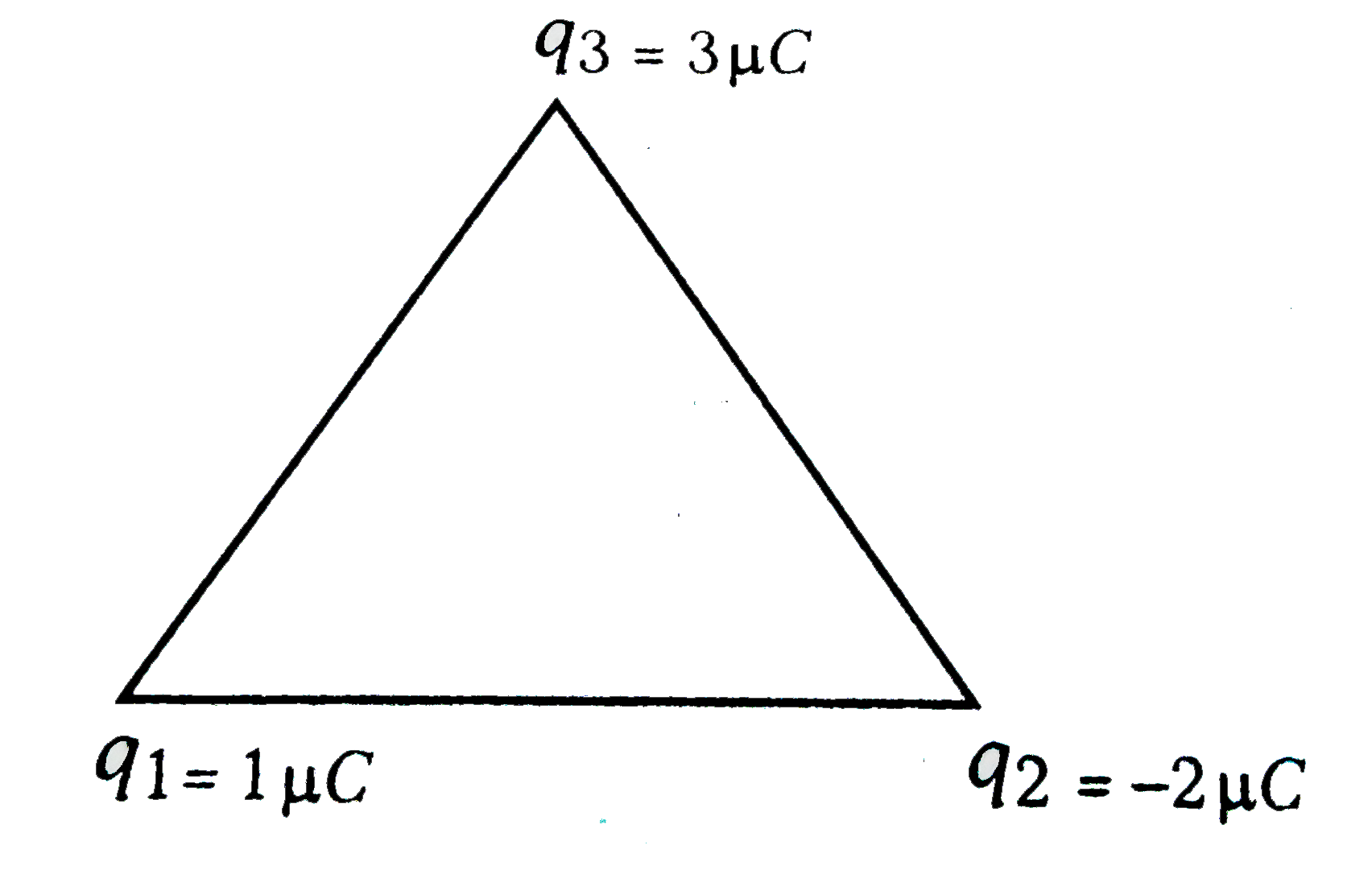A charge q1 exerts some force on a second charge q2 If a third charge q3 is brought near q2, then the force exerted by q1 on q2
Decreases
Increases
Remains unchanged
Increases if q3 is of same sing as q1 and decreases if q3 is of opposite sing
The correct Answer is:C
Step by step video & text solution for A charge q_(1) exerts some force on a second charge q_(2) If a third charge q_(3) is brought near q_(2), then the force exerted by q_(1) on q_(2) by Physics experts to help you in doubts & scoring excellent marks in Class 12 exams.
Updated on:21/07/2023Similar Questions
When two charges q1andq2 are kept at some distance apart, force acting between these charges is F. If a third change q3 is placed quite close to q3 is placed quite close to q2 what will happen to the force between q1andq2 ?
View SolutionThree charges q1=1μC,q2=−2μC and q3=3μC are placed on the vertices of an equilateral triangle of side 1.0 m. find the net electric force acting on charge q1.
How to proceed Charge q2 will attract charge q1 (along the line joining them) and charge q3 will repel charge q1. Therefore, two forces will act on q1, one due to q2 and another due to q3. Since , the force is a vector quantity both of these force (say F1 and F2) will be added by vector method. Following are two methods of their addition

View Solution
Knowledge Check
A charge q1 exerts some force on a second charge q2 If a third charge q3 is brought near q2, then the force exterted by q1 on q2
AdecreaseBincreaseCremains the sameDincrease, if q3 is of same sign as q1 and decrease, if q3 is of opposite sign as q1Assertion(A): A charge q1 exerts some force on a second charge q2 .If a third charge q3 is brought near,the force exerted by q1andq_(2) does not change.
Reason (R ) :No work is done tomove a charge on an equipotential line or surface.ABoth (A) and (R) are true and 'R' is the correct explanation of A.BBoth A and R are true and R is not the correct explanation of ACA is true and R is falseDA is false and R is true.A charge Q1 exerts some force on a second charge Q2. If a 3rd charge Q3 is brought near, the force of Q1 exerted on Q2 :-
Awill increaseBwill decreaseCwill remain unchangedDwill increase if Q3 is of the same sign as Q1 and will decrease if Q3 is of opposite sign
A particle of mass m carrying a charge −q1 starts moving around a fixed charge +q2 along a circulare path of radius r. Find the time period of revolution T of charge −q1.
View SolutionA charge Q exerts a 12 N force on another charge q. If the distance between the charges is doubled, what is the magnitude of the force exerted on Q by q?
View SolutionAssertion: Two charges q1 and q2 are placed at separation r. Then magnitude of the force on each charge is F.
Reason: Now a third charge q3 is placed near q1 and q2. Then force on q1 and q2 remains F.
View SolutionA particle of mass m and carrying charge −q1 is moving around a charge +q2 along a circular path of radius r. Period of revolution of the charge −q1 about +q2 is
View SolutionIn figure two positive charges q2 and q3 fixed along the y-axis, exert a net electric force in the +x-direction on a charge q1 fixed along the x-axis. If a positive charge Q is added at (x,0), the force on q1.

View Solution
